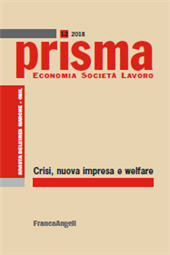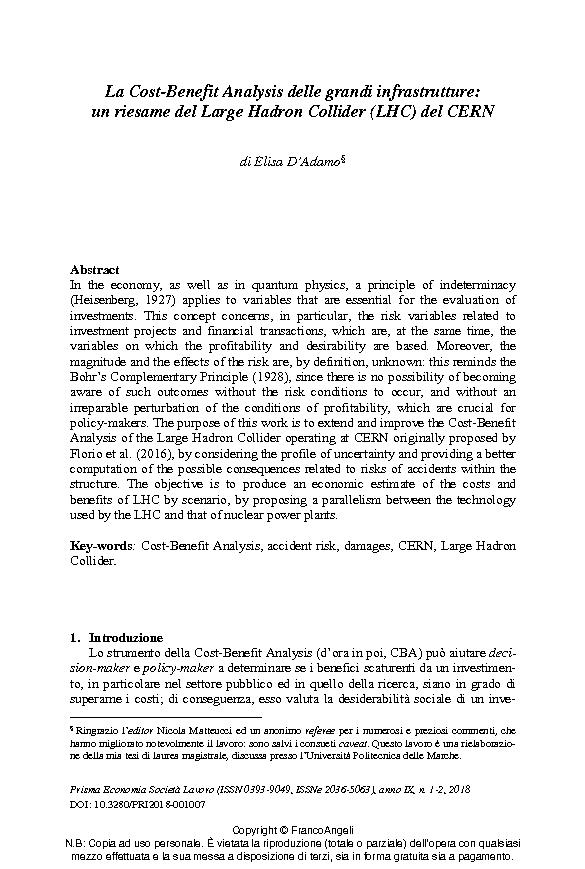La Cost-Benefit Analysis delle grandi infrastrutture : un riesame del Large Hadron Collider (LHC) del CERN
97-108 p.
In the economy, as well as in quantum physics, a principle of indeterminacy (Heisenberg, 1927) applies to variables that are essential for the evaluation of investments. This concept concerns, in particular, the risk variables related to investment projects and financial transactions, which are, at the same time, the variables on which the profitability and desirability are based. Moreover, the magnitude and the effects of the risk are, by definition, unknown: this reminds the Bohr's Complementary Principle (1928), since there is no possibility of becoming aware of such outcomes without the risk conditions to occur, and without an irreparable perturbation of the conditions of profitability, which are crucial for policy-makers.
The purpose of this work is to extend and improve the Cost-Benefit Analysis of the Large Hadron Collider operating at CERN originally proposed by Florio et al. (2016), by considering the profile of uncertainty and providing a better computation of the possible consequences related to risks of accidents within the structure. The objective is to produce an economic estimate of the costs and benefits of LHC by scenario, by proposing a parallelism between the technology used by the LHC and that of nuclear power plants. [Publisher's text]
Fa parte di
Prisma : economia, società, lavoro : 1/2, 2018-
Articoli dello stesso fascicolo (disponibili singolarmente)
-
Informazioni
Codice DOI: 10.3280/PRI2019-001007
ISSN: 2036-5063
PAROLE CHIAVE
- Cost-Benefit Analysis, accident risk, damages, CERN, Large Hadron Collider



